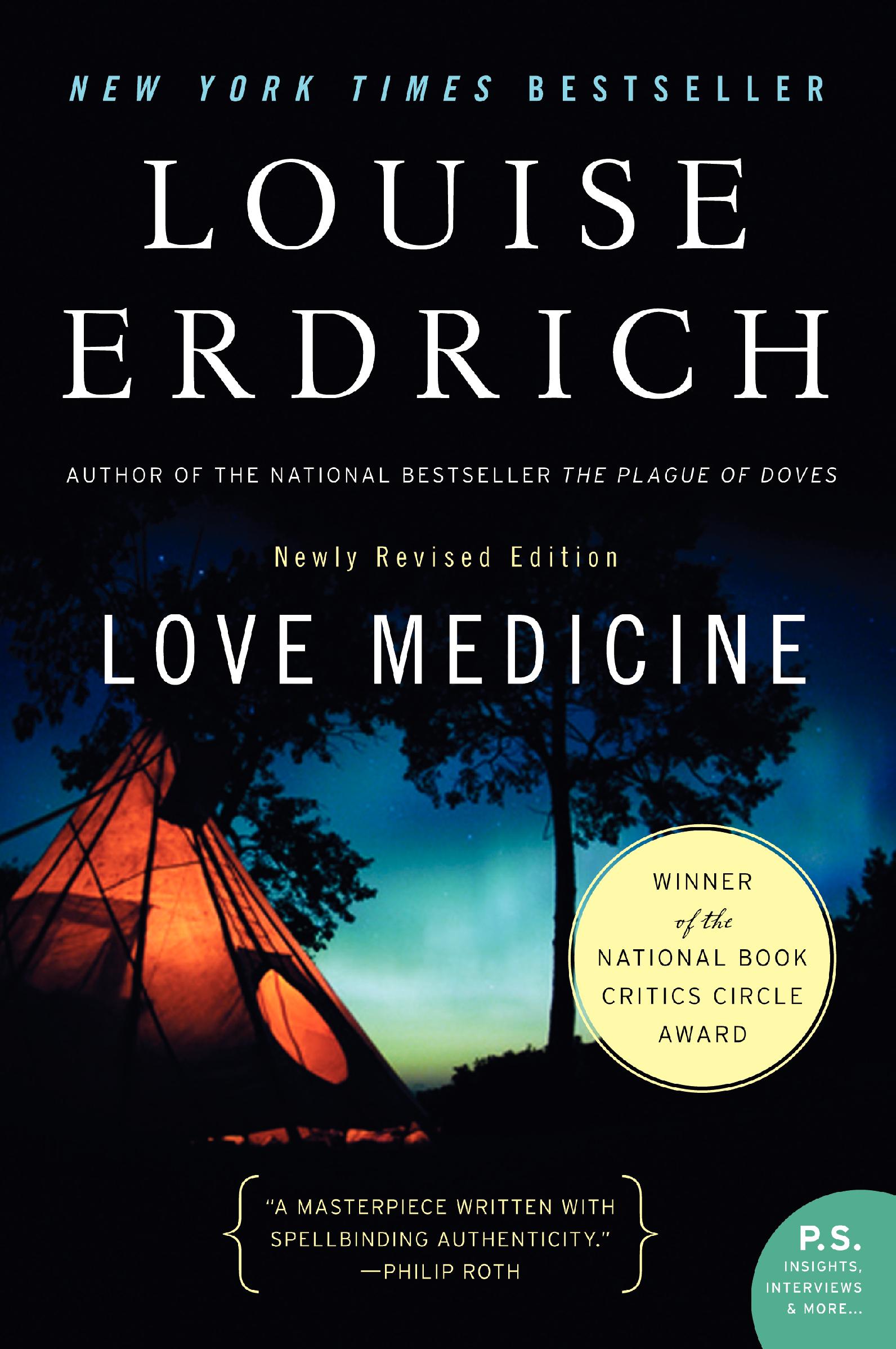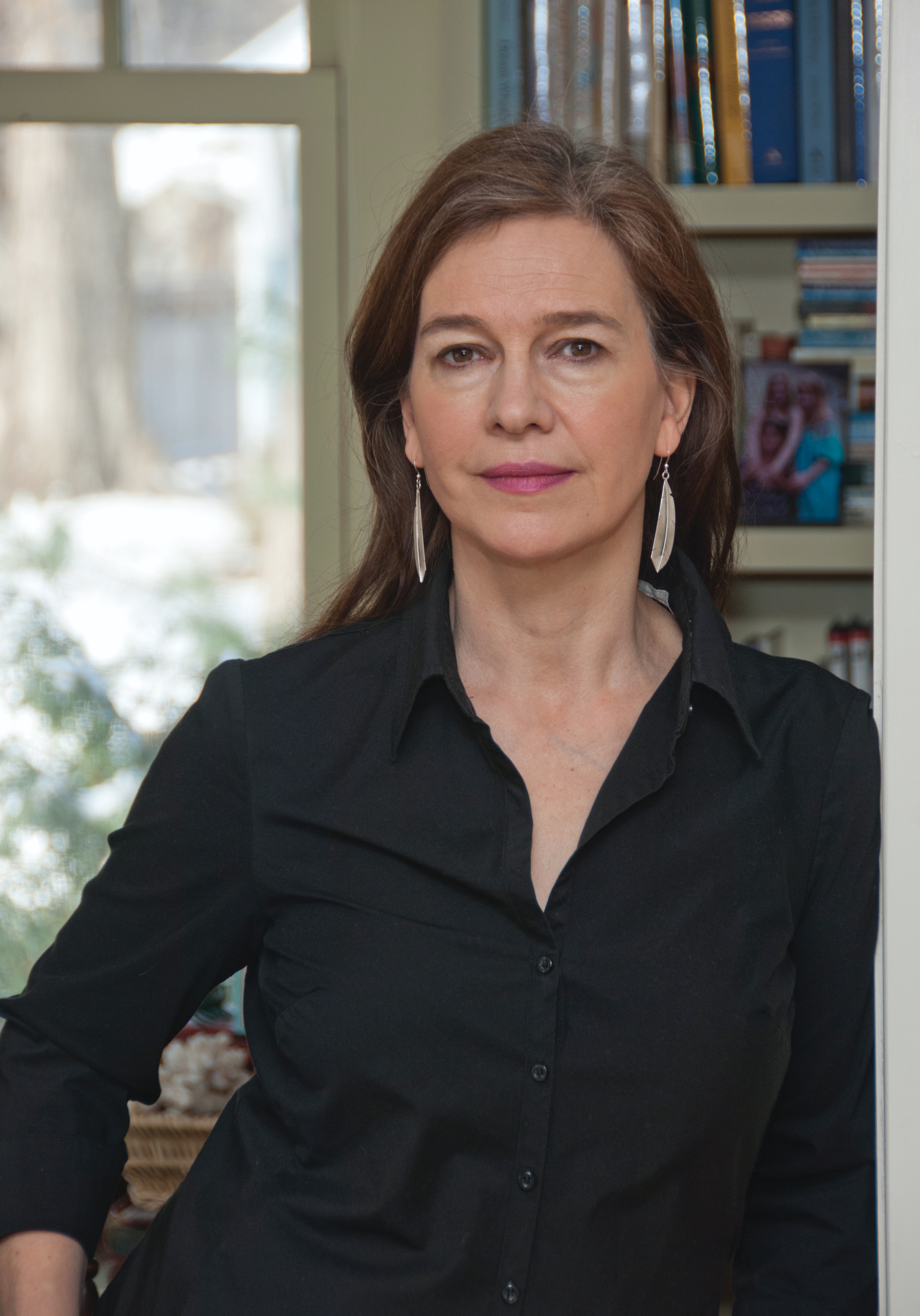Love Medicine

Overview
A novel-in-stories about passion, family, and the importance of cultural identity, Love Medicine examines the struggle to balance Native-American tradition with the modern world. Using an eclectic range of comic and tragic voices, Louise Erdrich leads the reader through the interwoven lives of two Chippewa families living in North Dakota. This modern classic is an often sad, sometimes funny look at the ways family and tradition bind us together.
"I didn’t grow up wandering among trees, or with streams of water around me; I grew up really looking at the sky." —from NEA interview
Overview
A novel-in-stories about passion, family, and the importance of cultural identity, Love Medicine examines the struggle to balance Native-American tradition with the modern world. Using an eclectic range of comic and tragic voices, Louise Erdrich leads the reader through the interwoven lives of two Chippewa families living in North Dakota. This modern classic is an often sad, sometimes funny look at the ways family and tradition bind us together.
Introduction to the Book
Good writing means revising, and sometimes the process never ends. Since Love Medicine was initially released in 1984, several editions of the novel have been published. The 1993 version contained material not included originally, such as the stories “Lyman’s Luck” and “The Tomahawk Factory.”
Revisiting the book for the 25th-anniversary edition, Erdrich felt that these two stories “interrupted the flow” of the novel’s final pages and chose not to include them. Erdrich explains in her author’s note at the end of the 2009 edition that she now understands she is “writing one long book in which the main chapters are also books” and that the characters in Love Medicine “live out their destinies” in her later work.
In a 1991 interview with Writer’s Digest, Erdrich noted, “People in [Native-American] families make everything into a story … People just sit and the stories start coming, one after another. I suppose that when you grow up constantly hearing the stories rise, break, and fall, it gets into you somehow.” These storytelling techniques manifest themselves in Erdrich’s fiction through the distinct voices of her characters and her complex, layered storylines.
Structured as a novel-in-stories, Love Medicine spans the half-century from 1934 to 1984 in rural North Dakota. The book’s chapters are told from the perspective of several different narrators weaving together the lives of two Chippewa families. The novel is not a linear path through time. Instead, it begins in 1981, loops back to the 1930s, and then proceeds forward into the mid-1980s.
In the book’s opening pages June Kashpaw, a renegade and free spirit, freezes to death in a snowstorm. The book then looks back to the departure of June’s aunt Marie Lazarre from the Sacred Heart Convent in 1934. On Marie’s way home she meets Nector Kashpaw, who will eventually become her husband. Nector had been romantically involved with Lulu Nanapush, but his chance encounter with Marie changes all three lives and their families forever.
By allowing these characters and others to tell their own stories with varied voices and perspectives, Erdrich created both memorable individuals and a testament to the ways that family can bind us together.
Major Characters in the Book
Marie Lazarre Kashpaw
Marie claims to be “part-Indian,” although she was born into a family of French descent. She spends part of her youth in Catholic school, and eventually enters the Sacred Heart Convent.
Nector Kashpaw
Nector is a successful, educated tribal leader. He marries Marie, but in middle age he resumes a relationship with his old flame, Lulu. Years later Nector’s dementia requires that he and Marie move into senior housing, where Lulu also lives.
Lulu Nanapush Lamartine
“No one ever understood my wild and secret ways,” Lulu claims, by way of explaining her many love affairs. Despite her wandering eye, Lulu is a good mother, raising eight boys, and finally a girl, over many years.
Lyman Lamartine
Lyman is the son of Lulu and Nector, conceived during her marriage to Henry Lamartine. After Lyman witnesses his brother’s death by drowning, he falls apart.
Lipsha Morrissey
Lipsha is blessed (or cursed) with “the touch,” the gift of healing. He was raised by Marie Lazarre Kashpaw, whom he thinks of as his grandmother, but resists learning his birth mother’s identity.
- Love Medicine does not have one central protagonist. It could be argued that Marie Kashpaw and Lulu Lamartine, as matriarchs of their respective families, share the role of “main character.” The two women are brought closer through their decades-long fight over Nector Kashpaw. Is one of these women more sympathetic to the reader than the other? Why or why not?
- Nector and Eli Kashpaw are brothers and members of the eldest generation in the novel. Nector is an educated family man, while Eli is quieter and more reclusive. In what ways are the brothers alike? In what other ways do they differ?
- What important events are told and retold from more than one character’s point of view? How do these retellings shape the reader’s understanding of the events?
- June Kashpaw appears as a character in the novel only in its opening pages, but the other characters remember her and speak of her frequently. Why is June Kashpaw so important to Marie Kashpaw? Why does Lipsha Morrissey care about June?
- As a young girl, Marie Kashpaw is terrorized by Sister Leopolda in the Sacred Heart Convent. Why does Marie decide to visit Leopolda at the convent so many years later, taking her daughter Zelda with her?
- This novel is steeped with death and loss, yet there are also comic moments throughout. How do these events relieve tension within the novel?
- How does Native American culture clash with mainstream American culture throughout Love Medicine? Describe some of the recurring conflicts in the novel, and how the characters react to or retreat from them.
- Is Lulu Lamartine a good person? How and why do her values differ from the other characters in the novel? Is she a sympathetic character? Why or why not?
- Lipsha Morrissey and Lyman Lamartine, although close in age, are opposites in many ways. How does the reader react to these two very different characters? How do they represent the options available to modern Native Americans?
- As a novel-in-stories, Love Medicine does not have a traditional, linear plot. Does the novel have a climax? Does it have more than one? Why or why not?


